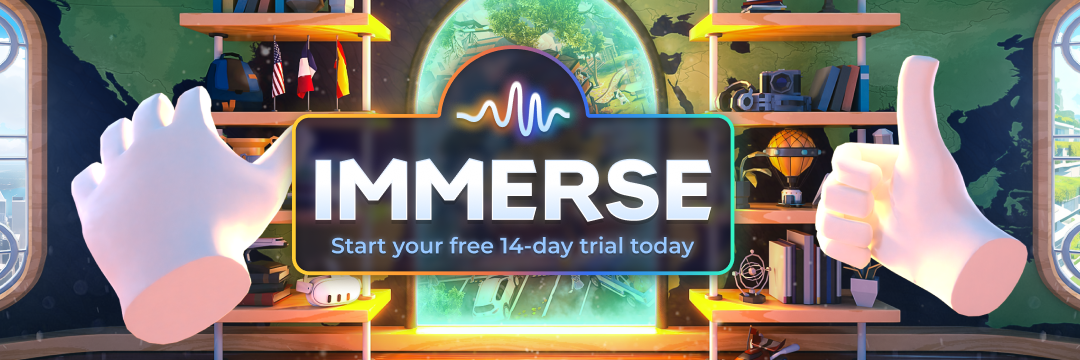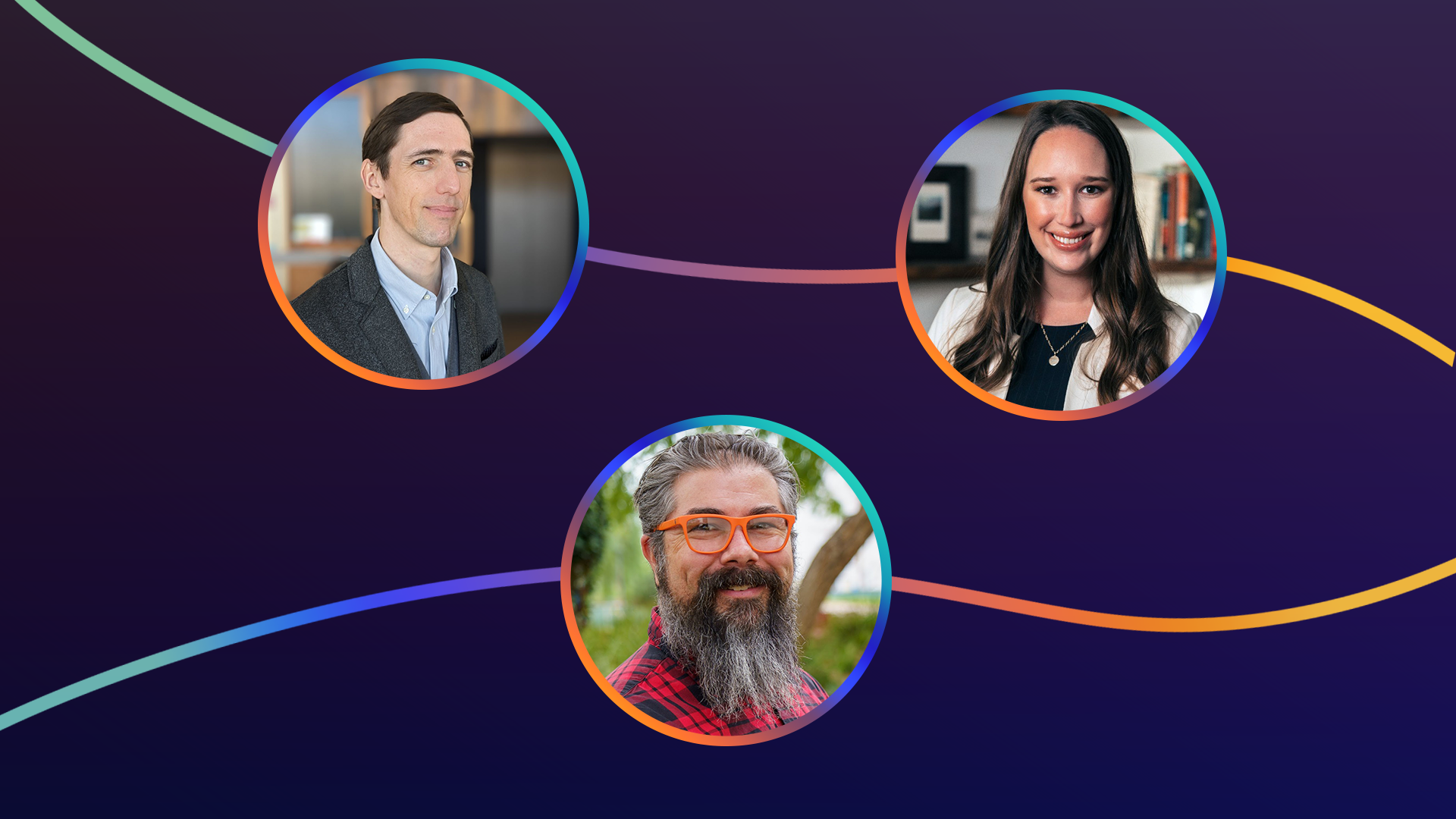Immerse insights:
- Research shows learners can speak English at a higher level when they are in VR English app Immerse.
- Learners are also more likely to pick up new vocabulary from context in Immerse, expanding their vocabulary.
- Learner anxiety levels are lower in Immerse than in the language classroom.
Language learners’ skills are often measured according to the CEFR scale, an international proficiency scale based on the speaking, listening, reading, and writing tasks a learner is able to perform. There are six CEFR levels, ranging from A1 (beginner) to C2 (equivalent to a well-educated native speaker).
While you might expect a person’s language skills to be at the same level in any setting, an intriguing study on middle schoolers learning English in Spain has shown that being in VR affected their abilities.
In particular, the researchers found that the learners spoke English at a higher CEFR level while talking in Immerse than they did when talking in their classroom.
What does the actual research say?

Researchers from the University of Illinois at Urbana-Champaign and the Universitat Autònoma in Barcelona spent ten weeks giving English lessons to middle schoolers in Spain. Some of the lessons were in the regular classroom, while others were conducted inside the VR language learning platform Immerse.
Students’ English skills were higher in Immerse - a whole CEFR level higher
The middle schoolers were high beginners and were expected to have a CEFR level of around A1-A2 CEFR in English.
Surprisingly, these learners used B1-level grammar and vocabulary while performing speaking tasks in Immerse. Yet when they performed similar speaking tasks in the classroom later, they only used A2 level English.
Vocabulary learning was more effective in Immerse
In the study, the researchers also found the learners used language in the classroom that they had picked up inside Immerse. Both the fact that they remembered the words later and also that they could apply them to a new context is a sign of strong, effective vocabulary learning - a benefit of language learning in VR that has been shown by other researchers as well.
In addition, when the students were in Immerse they learned phrases like “up there” and “over here,” which are not as easily picked up in a typical classroom setting.
In other words, the realistic environments in Immerse helped the learners express themselves more naturally in English.
Why is Immerse better for learning a language?

In Immerse, learning is highly contextualized, which helps you more easily understand new language. This context also helps you have conversations with your peers, because you are able to reference the objects in the environment when communicating.
Ultimately, this allows you to tap into your brain’s natural language-learning abilities. When you learn a language through social contact with other people and interactions with objects, you can activate the same neural networks in charge of the language or languages you already speak. This is the secret to Immerse’s demonstrated ability to help you learn a language faster and more efficiently.
Learning in Immerse, whether through a VR headset or a desktop, has already helped many learners speak Spanish, English, and French with more confidence. There’s simply no better way to learn.

Research source:
Dooly, M., Thrasher, T., & Sadler, R. (2023). “Whoa! Incredible!:” Language Learning Experiences in Virtual Reality. RELC Journal. https://doi.org/10.1177/00336882231167610

Tricia Thrasher

Miranda Novash
.jpg)





.png)




